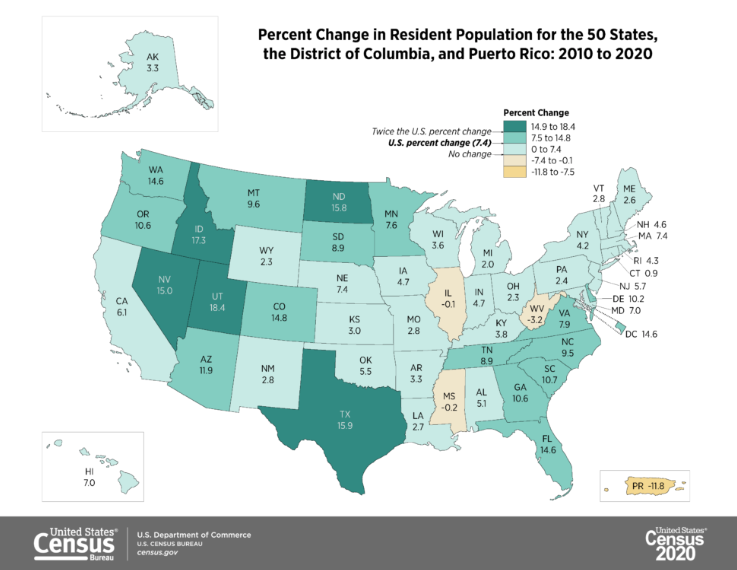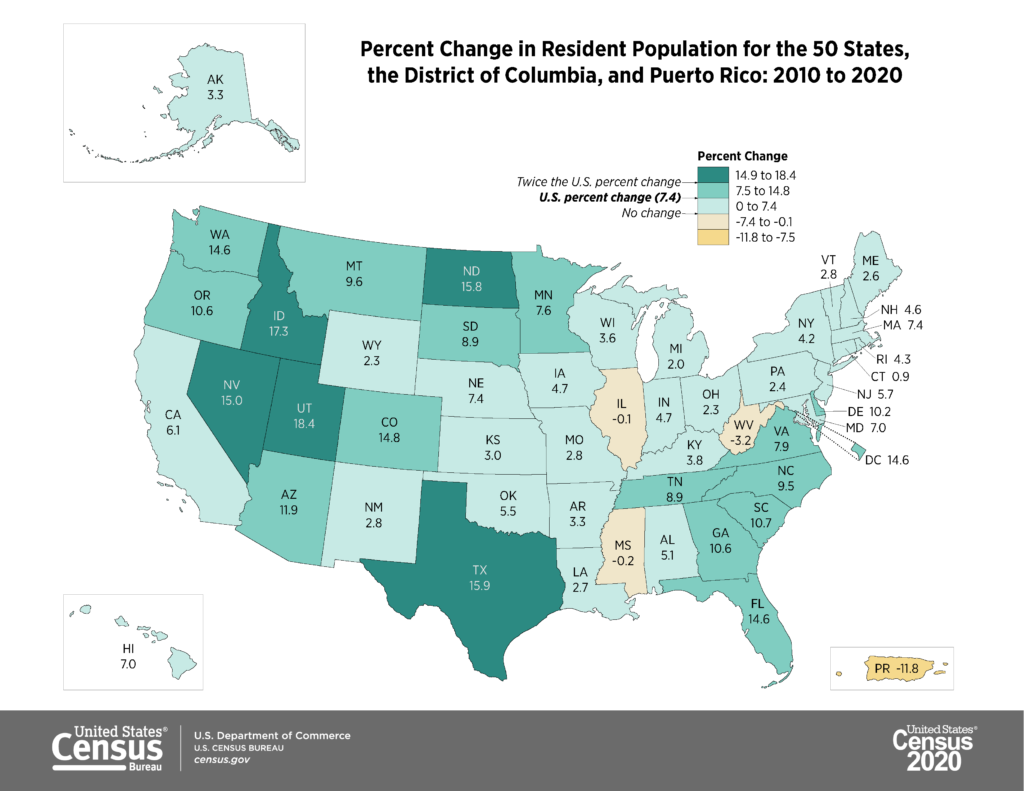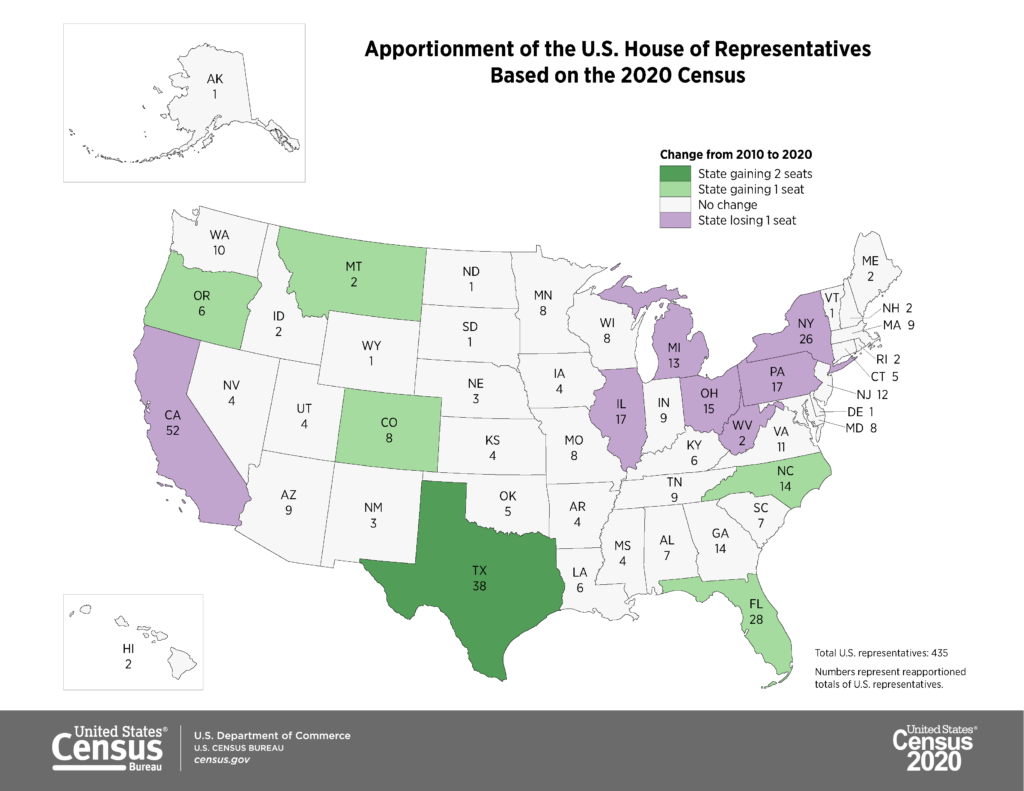
Census Announces Results of 2020 Census, Population Counts for Apportionment
The U.S. Census announced on April 26 that the 2020 census shows the population of the United States is 331,449,281. This represents growth of 7.4 percent from the 2010 census. This also represents the second slowest population growth rate in U.S. history.
“The American public deserves a big thank you for its overwhelming response to the 2020 Census,” Secretary of Commerce Gina Raimondo said in a statement. “Despite many challenges, our nation completed a census for the 24th time. This act is fundamental to our democracy and a declaration of our growth and resilience. I also want to thank the team at the U.S. Census Bureau, who overcame unprecedented challenges to collect and produce high-quality data that will inform decision-making for years to come.”
The population grew the fastest over the last decade in the South (10.2 percent) and in the West (9.2 percent). The Northeast and Midwest saw slower growth (4.1 percent and 3.1 percent, respectively). On average, each member of the House will represent 761,169 residents.
Map showing the percent change in resident population for the 50 States, the District of Columbia, and Puerto Rico, from 2010 to 2020. Source: U.S. Census Bureau, https://www2.census.gov/programs-surveys/decennial/2020/data/apportionment/apportionment-2020-map03.png.
The data release also included the State population counts used to apportion the seats in the U.S. House of Representatives. The 2022 election will be the first to use this new data. In total, seven seats will shift:
- Six States will gain House seats; Texas gained two seats, while Colorado, Florida, Montana, North Carolina, and Oregon each gained one seat.
- Seven states—California, Illinois, Michigan, New York, Ohio, Pennsylvania, and West Virginia—each will lose one seat.
Apportionment, which takes place every 10 years, is the process of distributing the 435 seats in the House among the 50 States. The results of the 2020 census are used to draw congressional and State legislative districts. The apportionment population excludes the population of the District of Columbia and Puerto Rico, which do not have voting members in the House.
Map showing apportionment of the U.S. House of Representatives based on the 2020 census. Source: U.S. Census Bureau, https://www2.census.gov/programs-surveys/decennial/2020/data/apportionment/apportionment-2020-map01.png.
Local to Econometrica:
- Maryland’s population was 6,177,224, up from 5,773,552 in 2010.
- Virginia’s population rose to 8,631,393 from 8,001,024 in 2010.
- The District of Columbia was 689,545, up from 601,723 in 2010.
For more information about the 2020 census data and apportionment, visit the Census Bureau’s 2020 Census Apportionment Results press kit.
Related Links:
- What Is Apportionment: https://www.census.gov/library/video/2021/what-is-apportionment.html
- How Apportionment Is Calculated: https://www.census.gov/newsroom/blogs/random-samplings/2021/04/how-apportionment-is-calculated.html
- Historical Apportionment Data Map: https://www.census.gov/library/visualizations/interactive/historical-apportionment-data-map.html
- Census Press release: https://www.census.gov/newsroom/press-releases/2021/2020-census-apportionment-results.html
The population grew the fastest over the last decade in the South (10.2 percent) and in the West (9.2 percent). The Northeast and Midwest saw slower growth (4.1 percent and 3.1 percent, respectively).








